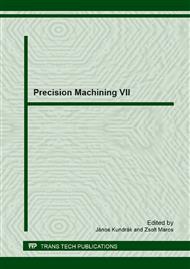p.451
p.456
p.462
p.466
p.472
p.478
p.485
p.491
p.497
Determination of the Mechanical Properties of Thermally Treated Recycled Glass Based on Nano-Indentation Measurement and FEM Supported Simulation
Abstract:
This paper reports on an inverse finite element modelling (FEM) simulation developed from nanoindentation measurement data. The FEM simulation was used to predict the mechanical properties of a thermally treated recycled glass. This material is a patented innovation used to manufacture abrasive media for vibratory mass finishing processes. A parametric study of the accuracy of the simulation results has been completed to verify the FEM and to assess the influence of a variation in sample size, tip geometry, frictional condition and material properties on the force displacement curves during the loading and unloading stages. Also examined were the mesh density sensitivity and the effect of object boundary condition. The model was post-processed employing novel objective optimization algorithms in order to determine comprehensive material properties. It was found from the proposed optimization algorithms that the mechanical properties of an assumed elastic perfectly plastic material can be determined using only a single indenter geometry. The nanoindentation results show that the heat treatment cycle has a substantial effect on the predicted mechanical properties of the recycled glass.
Info:
Periodical:
Pages:
472-477
Citation:
Online since:
October 2013
Authors:
Price:
Сopyright:
© 2014 Trans Tech Publications Ltd. All Rights Reserved
Share:
Citation:


